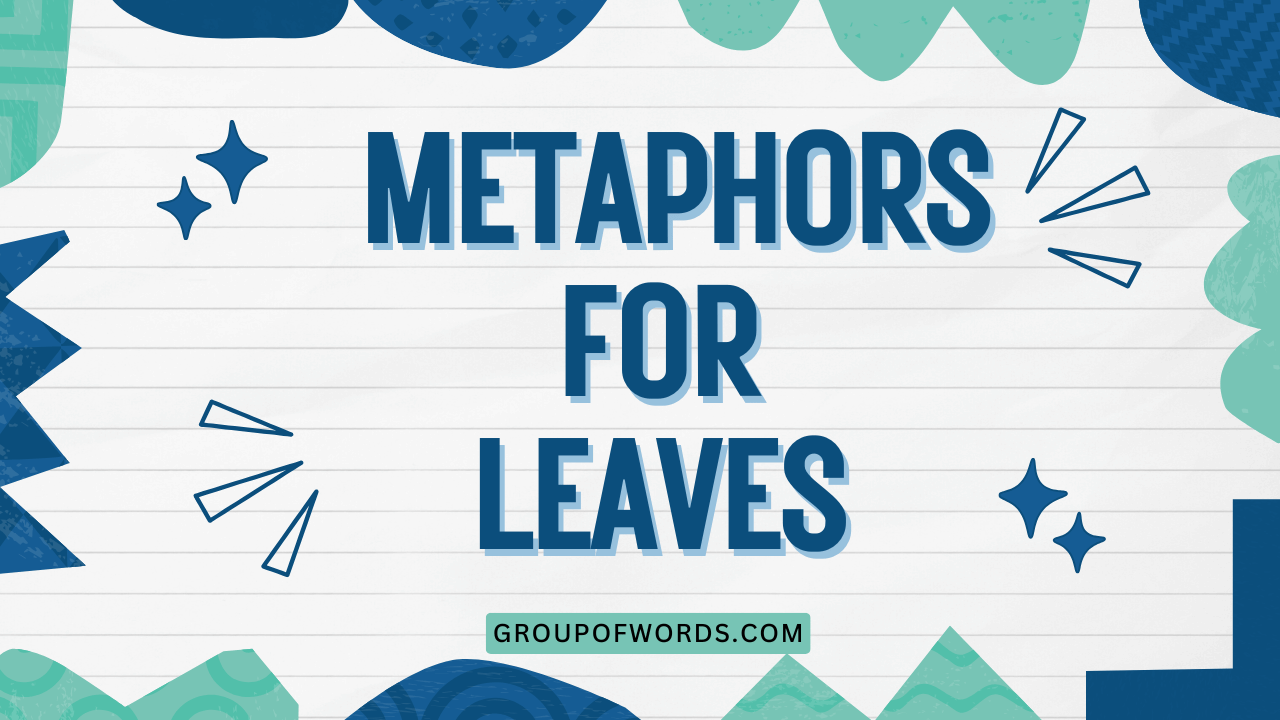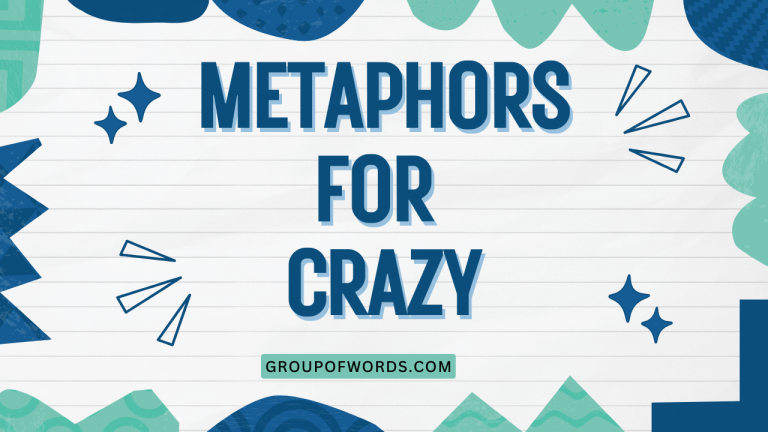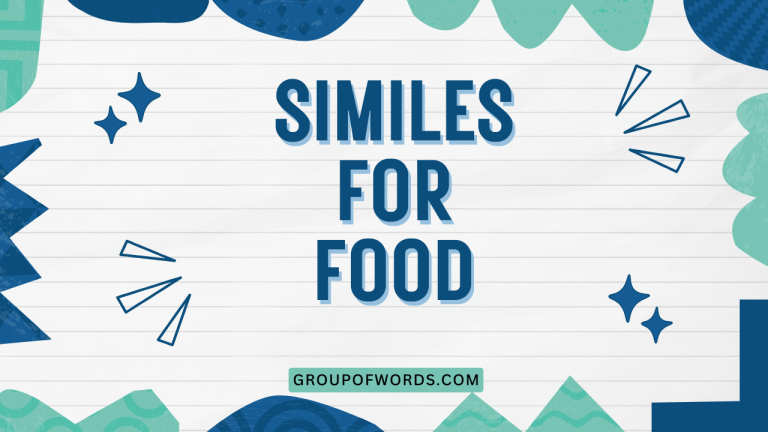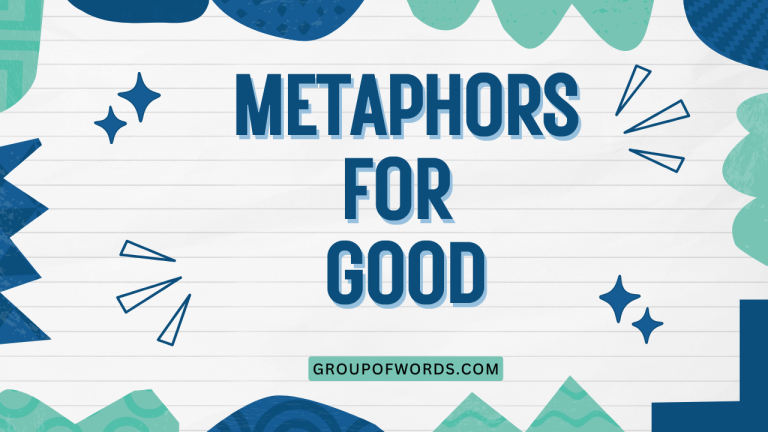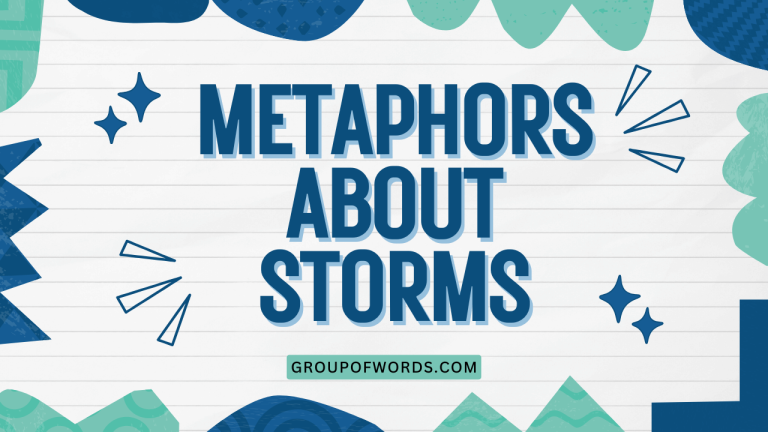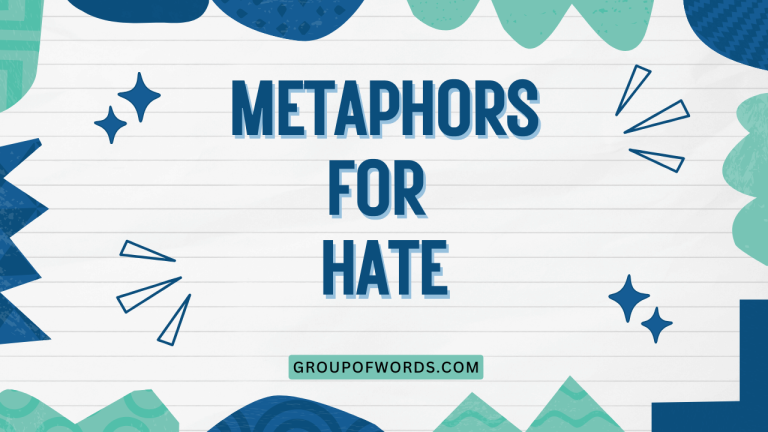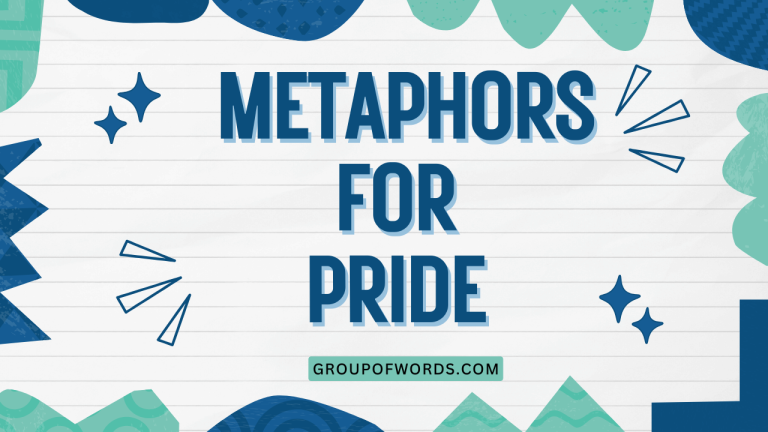Leaf Metaphors: Understanding Figurative Language
Metaphors are powerful tools in the English language, allowing us to create vivid imagery and deeper understanding by comparing unrelated things. When applied to leaves, these metaphors can evoke emotions, paint pictures, and add layers of meaning to our descriptions.
Understanding leaf metaphors enhances your comprehension of literature, poetry, and everyday conversations. This article is designed for English language learners, writers, and anyone interested in enriching their vocabulary and expressive abilities.
We’ll explore various types of leaf metaphors, their structures, usage rules, and common pitfalls, providing you with the knowledge and practice you need to master this fascinating aspect of figurative language.
This guide is structured to provide a comprehensive understanding, starting with the basic definition and progressing to advanced usage and practice exercises. By the end of this article, you will be able to identify, interpret, and create your own compelling leaf metaphors.
Table of Contents
- Definition of Metaphor
- Structural Breakdown of Leaf Metaphors
- Types and Categories of Leaf Metaphors
- Examples of Leaf Metaphors
- Usage Rules for Leaf Metaphors
- Common Mistakes with Leaf Metaphors
- Practice Exercises
- Advanced Topics in Leaf Metaphors
- Frequently Asked Questions
- Conclusion
Definition of Metaphor
A metaphor is a figure of speech that directly compares two unrelated things without using “like” or “as.” It asserts that one thing is another, creating a connection based on shared qualities or characteristics. Metaphors are used to add depth, color, and emotional resonance to language. They invite the reader or listener to see something in a new light by drawing parallels between seemingly disparate concepts.
In the context of leaf metaphors, we use the qualities of leaves – their color, shape, texture, movement, and life cycle – to describe something else. This creates a more vivid and imaginative understanding of the subject being described.
Metaphors are not literal; they are meant to be interpretative and suggestive, enriching our understanding beyond the purely factual.
For example, saying “Her smile was as bright as the sun” is a simile, while saying “Her smile was the sun” is a metaphor. The metaphor is more direct and impactful, suggesting a deeper connection between the smile and the sun.
Structural Breakdown of Leaf Metaphors
A leaf metaphor typically consists of two main components: the tenor and the vehicle. The tenor is the subject being described, while the vehicle is the leaf or the aspect of a leaf that is used to describe the tenor. The connection between the tenor and the vehicle is the shared characteristic or quality.
Let’s break down the structure with an example: “His words were falling leaves in the autumn of our relationship.”
- Tenor: His words
- Vehicle: Falling leaves
- Shared Characteristic: Decline, fragility, the end of something
In this metaphor, the words are being compared to falling leaves. The shared characteristic is the sense of decline or ending, suggesting that the words are contributing to the deterioration of the relationship.
The effectiveness of a metaphor depends on how well the shared characteristic is conveyed and understood.
Another example: “The old woman’s hands were like autumn leaves, wrinkled and brown.” In this case, the metaphor uses the visual characteristics of autumn leaves (wrinkles and brown color) to describe the appearance of the old woman’s hands, evoking a sense of age and fragility. The more resonant the connection, the more powerful the metaphor.
Types and Categories of Leaf Metaphors
Leaf metaphors can be categorized based on the specific aspect of leaves being used for comparison. Here are some common categories:
Life Cycle Metaphors
These metaphors use the stages of a leaf’s life – from budding to full bloom to decay – to represent similar stages in other entities, such as relationships, projects, or even human life. They often evoke themes of growth, maturity, decline, and renewal.
Example: “His career was a young leaf, full of potential.” This suggests that his career is just starting and has a promising future. Conversely, “Her dreams were withered leaves, scattered by the wind” suggests that her dreams have faded and are lost.
Color Metaphors
Leaves exhibit a wide range of colors, especially during autumn. These colors can be used to represent emotions, moods, or characteristics.
Green might symbolize youth or envy, yellow might suggest caution or decay, and red could represent passion or anger.
Example: “Her envy was a sickly green leaf, clinging to the branch of her ambition.” This metaphor uses the color green to represent envy and the image of a clinging leaf to suggest its persistent nature. Another example: “The sunset painted the sky with leaves of fire,” using the fiery red and orange colors to describe the sunset.
Texture Metaphors
The texture of a leaf – its smoothness, roughness, or crispness – can be used to describe the texture or feel of other things, both physical and emotional. A smooth leaf might represent calmness or ease, while a rough leaf could suggest difficulty or hardship.
Example: “His skin felt like dried leaves, brittle and fragile.” This uses the texture of dried leaves to describe the feeling of his skin, suggesting that it is dry and easily damaged. Another example: “The contract was worded with crisp, unyielding leaf-like precision.”
Motion Metaphors
The way leaves move – swaying in the breeze, falling from trees, rustling in the wind – can be used to describe the movement or behavior of other things. Swaying leaves might suggest flexibility or uncertainty, while falling leaves could represent surrender or loss.
Example: “The dancers moved like leaves in the wind, graceful and fluid.” This compares the dancers’ movements to the swaying of leaves, emphasizing their elegance and ease. Another example: “His hopes fell like leaves in autumn, one by one, until the tree was bare.”
Economic Metaphors
In this type of metaphor, leaves can be used to symbolize wealth, abundance, or scarcity. Think of the phrase “turning over a new leaf” which implies making a fresh start, often in the context of improving one’s financial situation or overall well-being.
Example: “The company’s profits were as plentiful as leaves on a tree in spring.” This metaphor uses the abundance of leaves in spring to represent the company’s high profits. Another example: “After the recession, their savings were reduced to a few withered leaves.”
Emotional Metaphors
Leaves can also be used to express a wide range of emotions. The rustling of leaves might evoke a sense of peace or anxiety, while the vibrant colors of autumn leaves might represent joy or nostalgia.
The act of raking leaves might symbolize dealing with difficult emotions or memories.
Example: “Her sadness was a pile of fallen leaves, gathering dust in the corner of her heart.” This metaphor uses the image of a pile of leaves to represent sadness, suggesting that it is accumulating and becoming stagnant. Another example: “The joy of the reunion fluttered like leaves in a gentle breeze.”
Examples of Leaf Metaphors
Here are some detailed examples of leaf metaphors categorized by their type, showcasing their diverse applications and effects.
Table 1: Life Cycle Metaphors
This table illustrates how the different stages of a leaf’s life can be used metaphorically to describe other processes or experiences.
| Metaphor | Explanation |
|---|---|
| “His ideas were budding leaves, just beginning to unfold.” | Suggests that his ideas are new and promising. |
| “Her potential was a young leaf, full of promise.” | Highlights the potential and future growth of a young person. |
| “Their love was a fully grown leaf, vibrant and strong.” | Implies that their love is mature and resilient. |
| “His career was a turning leaf, changing direction.” | Indicates a significant shift or change in his career path. |
| “Her memories were fading leaves, losing their color.” | Suggests that her memories are becoming less vivid over time. |
| “The project was a withered leaf, abandoned and forgotten.” | Implies that the project has been neglected and is no longer viable. |
| “His hopes were falling leaves, scattered by the wind.” | Suggests that his hopes are dwindling and disappearing. |
| “The relationship was a dried leaf, brittle and easily broken.” | Indicates that the relationship is fragile and prone to collapse. |
| “Their friendship was a fallen leaf, returning to the earth.” | Implies that their friendship has ended and is no longer active. |
| “Life is a seasonal leaf, ever-changing.” | Highlights the cyclical nature of life. |
| “The company’s growth was like a leaf in spring, rapid and abundant.” | Illustrates the company’s rapid and plentiful growth. |
| “Her health was a slowly decaying leaf, day by day.” | Suggests a gradual decline in her health. |
| “The artist’s inspiration was a fresh, green leaf, ready to create.” | Indicates the artist’s renewed and vibrant inspiration. |
| “The old house was like a tree shedding its leaves, losing its memories.” | Implies the house is losing its history and charm. |
| “Their dreams were like scattered leaves after a storm, lost and broken.” | Suggests dreams were destroyed by hardship. |
| “The project’s timeline was as short as a summer leaf’s lifespan.” | Indicates the project has a very short timeline. |
| “Her knowledge was a mature leaf, full of wisdom and experience.” | Suggests the person is knowledgable and experienced. |
| “The old man’s wisdom was like the deep roots beneath a tree, supporting many leaves.” | Highlights the stability and depth of the old man’s knowledge. |
| “The child’s imagination was a vibrant, ever-changing leaf, full of color and wonder.” | Indicates the child’s imagination is full of life. |
| “The poet’s words were like leaves in autumn, beautiful but fleeting.” | Suggests the beauty and transience of the poet’s words. |
Table 2: Color Metaphors
This table explores how the colors of leaves can be used to convey different emotions, characteristics, and situations.
| Metaphor | Explanation |
|---|---|
| “His jealousy was a green leaf, poisoning his thoughts.” | The green color symbolizes envy and its damaging effects. |
| “Her anger was a red leaf, burning with passion.” | The red color represents intense anger and passion. |
| “His fear was a yellow leaf, cautioning his steps.” | The yellow color suggests caution and apprehension. |
| “Her sadness was a brown leaf, representing decay and loss.” | The brown color symbolizes sadness, decay, and loss. |
| “His hope was a golden leaf, shining in the darkness.” | The golden color represents hope and optimism. |
| “The old house was painted in shades of faded green, like old leaves clinging to a branch.” | Describes the aged and weathered appearance of the house. |
| “Her eyes were the color of emerald leaves, bright and full of life.” | Compares her eyes to vibrant, green emerald leaves. |
| “The battlefield was strewn with crimson leaves, a testament to the bloodshed.” | Uses crimson leaves to symbolize the bloodshed on the battlefield. |
| “The sunset painted the sky with scarlet leaves, a fiery farewell to the day.” | Describes the sunset’s vibrant colors with scarlet leaves. |
| “His complexion turned a pale, sickly green, like a leaf deprived of sunlight.” | Suggests his complexion has become unhealthy. |
| “Her laughter was like the rustling of golden leaves, warm and comforting.” | Describes her laughter as comforting. |
| “The forest floor was a mosaic of autumnal leaves, a kaleidoscope of emotions.” | Suggests a range of emotions. |
| “The artist captured the essence of autumn in hues of orange and russet leaves.” | Indicates the artist has truly captured the essence of autumn. |
| “Her dress was the color of jade leaves, elegant and refined.” | Describes the dress as elegant. |
| “The old book’s pages were yellowed like aged leaves, holding stories of the past.” | Suggests old books hold stories of the past. |
| “The dancer’s costume shimmered with iridescent leaves, catching the light with every move.” | Describes the shimmer of the dancer’s costume. |
| “The politician’s promises were as empty as the dry, crackling leaves of late autumn.” | Suggests the promises are empty. |
| “The child’s drawing was a riot of colors, like a tree bursting with vibrant spring leaves.” | Describes the drawing as full of life. |
| “The garden was a symphony of green, with leaves of every shade imaginable.” | Indicates the garden is full of life. |
| “The musician’s notes were like falling leaves, each one a different hue of emotion.” | Suggests the notes evoke a range of emotions. |
Table 3: Texture Metaphors
This table illustrates how the texture of leaves can be used to describe the texture or feel of objects, emotions, or experiences.
| Metaphor | Explanation |
|---|---|
| “His skin was like dried leaves, brittle and fragile.” | The texture of dried leaves represents his skin’s fragility. |
| “Her voice was like rustling leaves, soft and soothing.” | The rustling texture describes her voice as gentle. |
| “The contract had crisp, unyielding leaf-like precision.” | Emphasizes the precise and inflexible nature of the contract. |
| “The old book felt like aged leaves, delicate and precious.” | Describes the book’s texture as delicate and precious. |
| “The fabric was as smooth as a young leaf, soft against the skin.” | Compares the fabric’s smoothness to that of a young leaf. |
| “The surface of the table was polished to a sheen, like the glossy surface of a healthy leaf.” | Describes how polished the table is. |
| “His memories were like pressed leaves, preserved and fragile.” | Suggests his memories are preserved but fragile. |
| “The wind whispered through the trees, creating a sound like the rubbing of dry leaves.” | Describes the sounds of the wind. |
| “The artist’s brushstrokes were as delicate as the veins of a leaf.” | Describes the delicacy of the artist’s brushstrokes. |
| “The old photograph was faded and cracked, like a brittle autumn leaf.” | Suggests the photograph is old. |
| “The music was like the gentle rustling of leaves in a summer breeze, calming and serene.” | Describes the music as calming. |
| “The texture of the handmade paper was rough and uneven, like the surface of a tree’s bark and fallen leaves.” | Describes the nature of the paper. |
| “The dancer’s movements were as light and airy as falling leaves, graceful and effortless.” | Describes the dance as effortless. |
| “Her emotions were raw and exposed, like the veins of a leaf stripped bare by the wind.” | Suggests the emotions are bare and raw. |
| “The landscape was rugged and unforgiving, like a forest floor covered in sharp, unyielding leaves.” | Describes the landscape as unforgiving. |
| “The chef’s plating was meticulous, each ingredient arranged with the precision of a leaf on a branch.” | Describes the plating as meticulous. |
| “The ancient manuscript was filled with intricate details, like the complex patterns of a leaf’s veins.” | Suggests the manuscript is well-detailed. |
| “The speaker’s words were as smooth as polished stones, yet as impactful as a storm of falling leaves.” | Describes the words as impactful. |
| “The garden was a tapestry of textures, from the velvety softness of new leaves to the rough bark of ancient trees.” | Describes the gardens textures. |
| “The artist’s sculpture captured the essence of nature, with textures that mimicked the feel of leaves, bark, and stone.” | Indicates the sculpture captures the essence of nature. |
Usage Rules for Leaf Metaphors
Using leaf metaphors effectively requires understanding certain rules and guidelines:
- Relevance: The connection between the leaf and the subject should be clear and relevant. The shared characteristic should be easily understood by the audience.
- Originality: While some common metaphors are acceptable, strive for originality to make your writing more engaging and memorable. Avoid clichés.
- Consistency: Maintain consistency within the metaphor. Avoid mixing different images or ideas that clash with the overall comparison.
- Context: Consider the context in which the metaphor is used. The appropriateness of a metaphor can depend on the tone, audience, and purpose of the writing.
- Clarity: Ensure the metaphor enhances understanding rather than confusing the reader. If the metaphor is too obscure or complex, it may not be effective.
For example, instead of saying “His anger was like a leaf,” which is vague, you could say “His anger was a brittle, dried leaf, ready to crumble at the slightest touch,” which is more specific and evocative.
Another example of a good usage: “The city was a forest of concrete and steel, with leaves of glass reflecting the sun.” This metaphor effectively compares the city to a forest, using leaves of glass to represent the reflective surfaces of buildings.
Common Mistakes with Leaf Metaphors
Here are some common mistakes to avoid when using leaf metaphors:
- Clichés: Overused metaphors that have lost their impact.
- Mixed Metaphors: Combining unrelated images that create confusion.
- Obscurity: Metaphors that are too complex or unclear for the audience.
- Inconsistency: Shifting between different metaphors without a clear connection.
- Lack of Relevance: Using metaphors that don’t logically connect to the subject.
Table 4: Correct vs. Incorrect Examples
This table shows examples of common mistakes in using leaf metaphors and provides corrections to improve clarity and effectiveness.
| Incorrect | Correct | Explanation |
|---|---|---|
| “His life was a leaf in the wind, and he sailed through it.” | “His life was a leaf in the wind, tossed and turned by fate.” | The original sentence mixes the imagery of a leaf being blown by the wind with the idea of sailing, which is inconsistent. |
| “Her heart was a leaf, like a stone.” | “Her heart was a fragile leaf, easily bruised.” | The original sentence compares a heart to both a leaf and a stone, which is contradictory. |
| “The project was a green leaf, but also a car.” | “The project was a promising green leaf, full of potential.” | The original sentence mixes the metaphor of a leaf with an unrelated object (a car). |
| “His words were leaves, but they tasted like sunshine.” | “His words were sweet as honey, bringing warmth like sunshine.” | The original sentence is nonsensical. Leaves do not taste like sunshine. |
| “She was a leaf.” | “She was a resilient leaf, weathering every storm.” | The original sentence is too vague and lacks descriptive detail. |
| “The idea was as green as a leaf and as bright as the sun.” | “The idea was a fresh, green leaf, full of potential for growth.” | The original sentence uses two separate comparisons (“green as a leaf” and “bright as the sun”) instead of integrating them into a single, coherent metaphor. |
| “His emotions were a pile of leaves, flying high in the sky.” | “His emotions were a chaotic pile of leaves, scattered by a storm.” | The original sentence presents a contradictory image, as leaves typically fall rather than fly high in the sky. |
| “The company’s profits were like leaves, and the sky was blue.” | “The company’s profits were as abundant as leaves on a tree in springtime.” | The original sentence is unrelated and nonsensical. There is no connection between profits and a blue sky. |
| “The situation was a leaf, but also a mountain.” | “The situation was a delicate leaf, hanging precariously in the balance.” | The original sentence is a mixed metaphor combining a leaf and a mountain, which are unrelated. |
| “His love was a leaf, and it rained.” | “His love was a fragile leaf, easily damaged by the harsh realities of life.” | The original sentence is incomplete and lacks a clear connection between love and rain. |
Practice Exercises
Test your understanding of leaf metaphors with these exercises:
Exercise 1: Identifying Leaf Metaphors
Identify the leaf metaphor in each sentence and explain what it means.
Table 5: Exercise 1 – Identifying Leaf Metaphors
| Question | Answer |
|---|---|
| 1. Her tears were falling leaves, marking the end of their story. | Her tears are compared to falling leaves, symbolizing the end of something. |
| 2. His words were like autumn leaves, beautiful but destined to decay. | His words are compared to autumn leaves, suggesting their beauty is fleeting. |
| 3. The old house was like a tree shedding its leaves, losing its memories one by one. | The house is compared to tree shedding leaves, indicating a loss of memories. |
| 4. The dancer moved like a leaf in the wind, graceful and effortless. | The dancer’s movement is compared to a leaf in the wind, emphasizing grace. |
| 5. His anger was a red leaf, burning with unspoken rage. | His anger is compared to a red leaf, symbolizing intense rage. |
| 6. The child’s imagination was a vibrant, ever-changing leaf, full of color and wonder. | The child’s imagination is compared to a vibrant leaf, full of wonder. |
| 7. The old man’s wisdom was like the deep roots beneath a tree, supporting many leaves. | The man’s wisdom is compared to tree roots, supporting many leaves. |
| 8. Her skin felt like dried leaves, brittle and fragile to the touch. | Her skin is compared to dried leaves, emphasizing fragility. |
| 9. The contract had crisp, unyielding leaf-like precision. | The contract is compared to a leaf, emphasizing preciseness. |
| 10. The project was a withered leaf, abandoned and forgotten. | The project is compared to a withered leaf, suggesting it’s abandoned. |
Exercise 2: Completing Leaf Metaphors
Complete the following sentences by adding an appropriate leaf metaphor.
Table 6: Exercise 2 – Completing Leaf Metaphors
| Question | Answer |
|---|---|
| 1. Her dreams were like __________, scattered by the winds of reality. | Her dreams were like fallen leaves, scattered by the winds of reality. |
| 2. His hopes were as delicate as __________, easily crushed by disappointment. | His hopes were as delicate as new leaves in spring, easily crushed by disappointment. |
| 3. The company’s profits grew as quickly as __________ in springtime. | The company’s profits grew as quickly as leaves on a tree in springtime. |
| 4. The old woman’s memories were like __________, preserved in the album of her mind. | The old woman’s memories were like pressed leaves, preserved in the album of her mind. |
| 5. The politician’s promises were as empty as __________ in late autumn. | The politician’s promises were as empty as dry, crackling leaves in late autumn. |
| 6. The lovers intertwined, their lives as entwined as ___________ on the forest floor. | The lovers intertwined, their lives as entwined as fallen leaves on the forest floor. |
| 7. The artist’s creation was a masterpiece, with details as intricate as ___________. | The artist’s creation was a masterpiece, with details as intricate as the veins of a leaf. |
| 8. The old friendship, once vibrant, now lay as __________, forgotten and neglected. | The old friendship, once vibrant, now lay as withered leaves, forgotten and neglected. |
| 9. Her tears flowed freely, each one as precious as __________ in the desert. | Her tears flowed freely, each one as precious as a dew-kissed leaf in the desert. |
| 10. He turned over __________, resolving to make a fresh start. | He turned over a new leaf, resolving to make a fresh start. |
Exercise 3: Creating Leaf Metaphors
Write your own leaf metaphor for each of the following topics:
Table 7: Exercise 3 – Creating Leaf Metaphors
| Topic | Your Metaphor |
|---|---|
| 1. Happiness | Happiness is a sunlit leaf, shimmering with joy. |
| 2. Sadness | Sadness is a fallen leaf, decaying in the shadows. |
| 3. Hope | Hope is a budding leaf, reaching for the light. |
| 4. Fear | Fear is a trembling leaf, quivering in the wind. |
| 5. Anger | Anger is a brittle leaf, ready to snap. |
| 6. Love | Love is a strong leaf, rooted deeply in the heart. |
| 7. Loneliness | Loneliness is a solitary leaf, detached from the branch. |
| 8. Inspiration | Inspiration is a fresh leaf, bursting with creativity. |
| 9. Regret | Regret is a withered leaf, clinging to the past. |
| 10. Forgiveness | Forgiveness is a fallen leaf, returning to the earth to nourish new growth. |
Advanced Topics in Leaf Metaphors
For advanced learners, here are some more complex aspects of leaf metaphors:
- Extended Metaphors: Developing a single leaf metaphor throughout an entire piece of writing, creating a sustained comparison.
- Subverted Metaphors: Using leaf metaphors in unexpected or ironic ways to challenge conventional thinking.
- Cultural Significance: Exploring the cultural meanings and associations of leaves in different societies and how they influence metaphorical usage.
- Symbolism: Analyzing the symbolic roles leaves play in literature and art, from representing life and growth to symbolizing decay and death.
For example, an extended metaphor could compare an entire nation to a forest, with its citizens as individual leaves, each contributing to the overall health and vibrancy of the ecosystem. This metaphor could be sustained throughout a novel or poem, exploring themes of community, individuality, and environmental responsibility.
Frequently Asked Questions
- What is the difference between a metaphor and a simile?
A metaphor directly compares two things by stating that one is the other, while a simile uses “like” or “as” to make a comparison. For example, “Her smile was the sun” is a metaphor, while “Her smile was as bright as the sun” is a simile. Similes are generally considered less direct and forceful than metaphors.
- How can I make my leaf metaphors more original?
Avoid using clichés or overused phrases. Instead, focus on specific and unique qualities of leaves that relate to the subject you are describing. Consider using unusual or unexpected comparisons to create a more memorable and impactful metaphor. Think about the specific context and the emotions you want to evoke, and tailor your metaphor accordingly.
- What should I do if my metaphor is confusing?
If your metaphor is unclear or confusing, try to simplify it or provide more context. Make sure the connection between the leaf and the subject is clear and relevant. You may also consider revising the metaphor altogether if it is not effectively conveying your intended meaning. Getting feedback from others can also help identify and address any confusion.
- Are there any cultures where leaf metaphors are particularly common?
Many cultures have rich traditions of using leaf metaphors in their literature, poetry, and folklore. In some cultures, leaves are associated with specific symbols or meanings, such as life, death, or renewal. Exploring the cultural context of leaves can provide valuable insights into the use and interpretation of leaf metaphors. For example, in some Asian cultures, the falling of leaves is closely associated with the concept of impermanence.
- Can I use leaf metaphors in formal writing?
Yes, leaf metaphors can be used in formal writing, but it is important to use them judiciously and appropriately. The metaphor should enhance the clarity and impact of your writing without being overly flowery or distracting. Consider the audience and purpose of your writing and choose metaphors that are both relevant and effective. In formal contexts, maintaining a balance between creativity and precision is key.
- How do I avoid mixed metaphors?
Mixed metaphors occur when you combine unrelated images or ideas in a single metaphor, creating confusion or absurdity. To avoid this, make sure the different elements of your metaphor are consistent and logically connected. Stick to a single unifying image or concept throughout the metaphor. If you find yourself mixing images, revise the metaphor to create a more coherent and unified comparison.
- Why are metaphors important in language?
Metaphors add depth, color, and emotional resonance to language. They allow us to see things in a new light by drawing parallels between seemingly disparate concepts. Metaphors can make our writing more vivid, engaging, and memorable. They also enhance our understanding of complex ideas by relating them to more familiar and concrete concepts. Metaphors are essential tools for effective communication and creative expression.
- How can I practice using leaf metaphors?
Practice is key to
mastering the art of using leaf metaphors. Start by identifying leaf metaphors in literature, poetry, and everyday conversations. Try rewriting sentences using leaf metaphors to add depth and imagery. Keep a journal of leaf metaphors you encounter or create. The more you practice, the more natural and intuitive it will become.
Conclusion
Leaf metaphors offer a rich and evocative way to enhance your writing and communication. By understanding the structure, types, and usage rules of leaf metaphors, you can effectively employ them to add depth, color, and emotional resonance to your language.
Avoid common mistakes, practice regularly, and explore advanced topics to master this fascinating aspect of figurative language. Whether you are an English language learner, a writer, or simply someone interested in enriching your vocabulary, the world of leaf metaphors is sure to provide endless inspiration and creative possibilities.
Embrace the power of metaphor and let your words take flight, like leaves on the wind.
